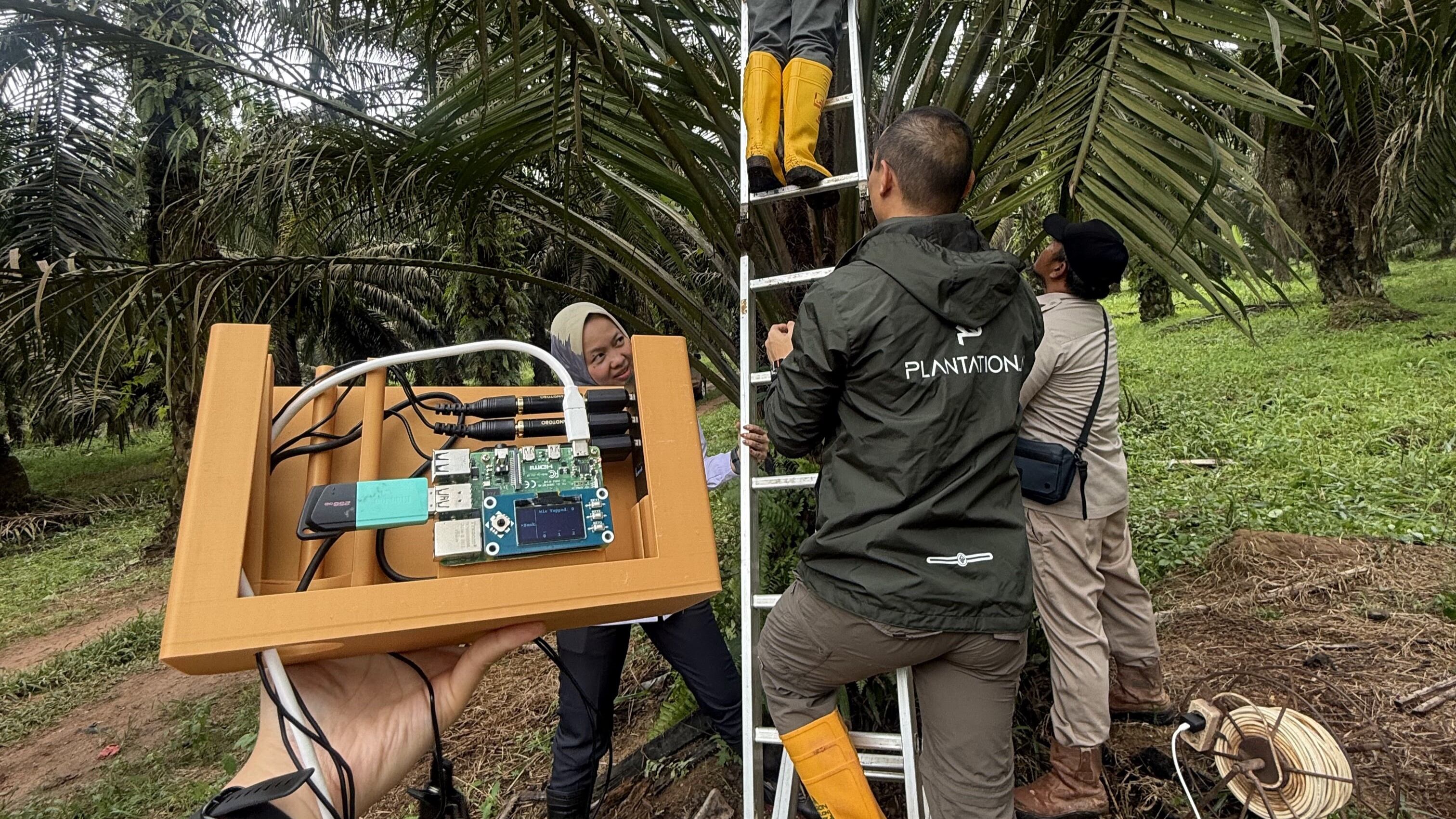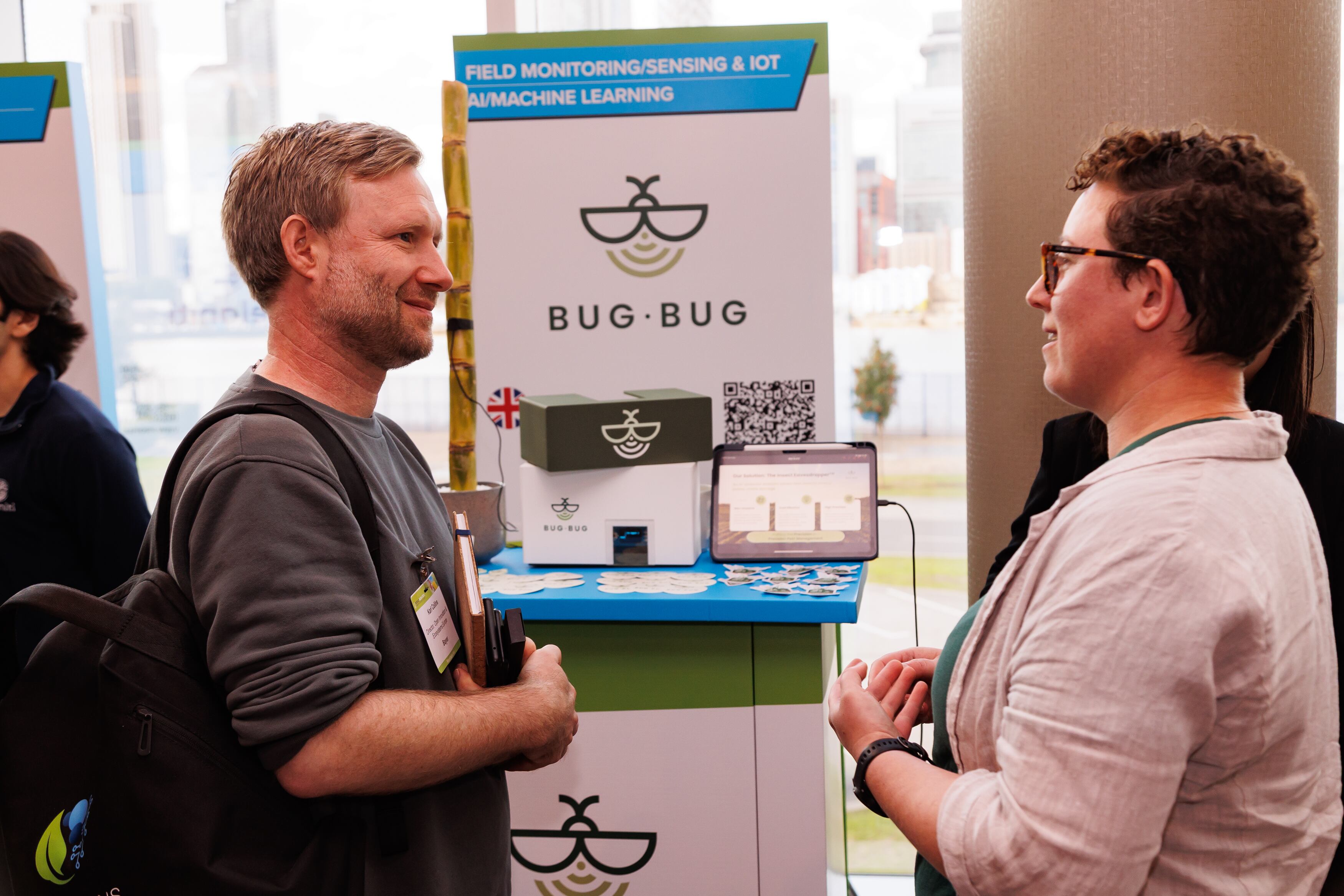The Insect Eavesdropper picks up on the vibrations that travel through the plant to not only detect active infestations but identify the type of pests within.
The device was developed based on the insect knowledge of co-founder Dr Emily Bick Ph.D, an entomologist and professor at the University of Wisconsin.
Speaking to AgTechNavigator, Bick expressed that even experienced entomologists may not catch every infestation in time, leaving gaps that AI technology is now helping to fill.
“With conventional methods, it still takes a person with the expertise in entomology, and there aren’t that many of us out there.”
The Insect Eavesdropper is powered by proprietary algorithms developed by co-founder and chief technology officer, Laurence Still.
“What we’re listening to is the insects damaging the crops. The sound is based on the insect – is it chewing, piercing, or sucking? All of that sounds different… it travels through the plant into our microphones, and we use AI to classify them.”
BugBug was at the World Agri-Tech Innovation Summit in London in September where Dr Emily Bick explains how much the Insect Eavesdropper has uncovered about insects that was previously unknown to entomologists. See the video below:
Precision pest management
The inspiration for the Insect Eavesdropper began with CEO Jadey Huray, who also serves as director of Gunung Madu Plantations located in Sumatra, Indonesia.
“We cultivate sugarcane, and we lost 60% of our yield in one year. By the time we figured it out, it was way too late; the insects were invading our fields. That’s when I wanted to explore how we could find out before the insects start boring into the sugarcane, because conventional methods cannot detect them.”
Beyond identifying a problem, the device also helps growers tackle it effectively.
“Right now, when you apply your pesticides or parasitoids, you don’t actually know the efficacy. There’s no discernible way to measure how well it’s working while you’re just spending a ton of money. What we’re able to do is measure it, pre- and post-intervention,” said Huray.
Huray stressed that farmers urgently require more precise approaches to tackle pest problems.
“In some countries, being just 48 hours late in identifying a pest can result in losses of up to 70% of a crop. When we were in the Maldives looking at coconut palms, some farmers had lost 70% of their yield.”
Meanwhile, growing restrictions on pesticide use are removing more tools from the farmers’ toolbox, pushing them to adopt more targeted approaches
“Farmers are now combining multiple products to tackle pests from different angles, but the strategy only works with precise diagnostics,” said Still.
Huray added: “Precision or integrated pest management only works if you know exactly what pests you’re dealing with and what stage of their life cycle they’re in. Many pesticides last just 24 hours, so if the pest has already moved on, it’s too late – you’ve wasted one of the one or two sprays allowed in a season.”

Global potential
The firm was founded three months ago after it spun off from the University of Wisconsin.
Moving forward, the co-founders aim to pursue commercial partnerships and further develop the product to ensure it aligns with market needs.
“We’re very upfront about the fact that we are still developing the product. We want to make it more robust and find ways of getting the cost down. We also aim to develop something more suitable for larger-scale projects. With the right partnerships, we can make sure what we’re producing is right for the market,” said Still.
The team sees global potential for the product as it can work on a variety of plants from grape vines and apple trees to maize and coconut palm.
One major crop it has its eye on is oil palm in the South East Asian region, where the plantations have to deal with rhinoceros beetles, said Huray.
“They have a sneaky tendency to attack very quickly, then fly off. You’ll see these huge holes and there’s the same issue. It looks damaged, but you don’t know if there’s an active infestation.”


